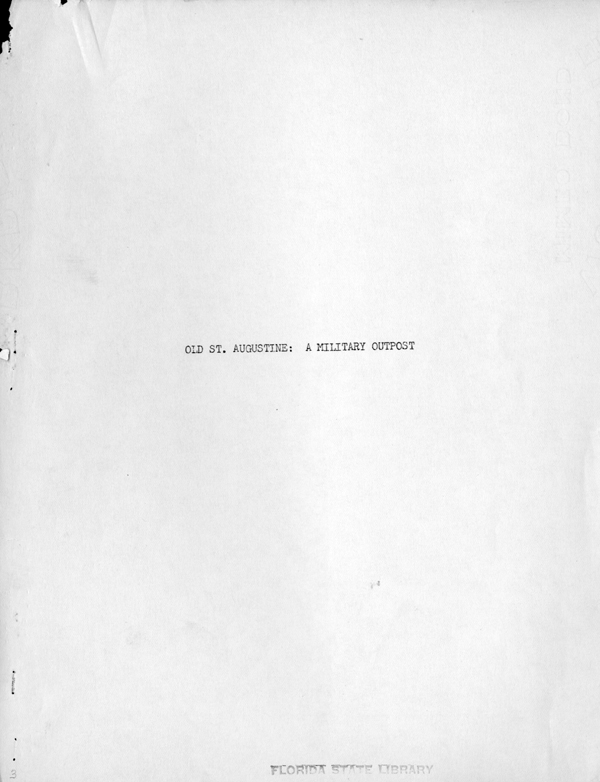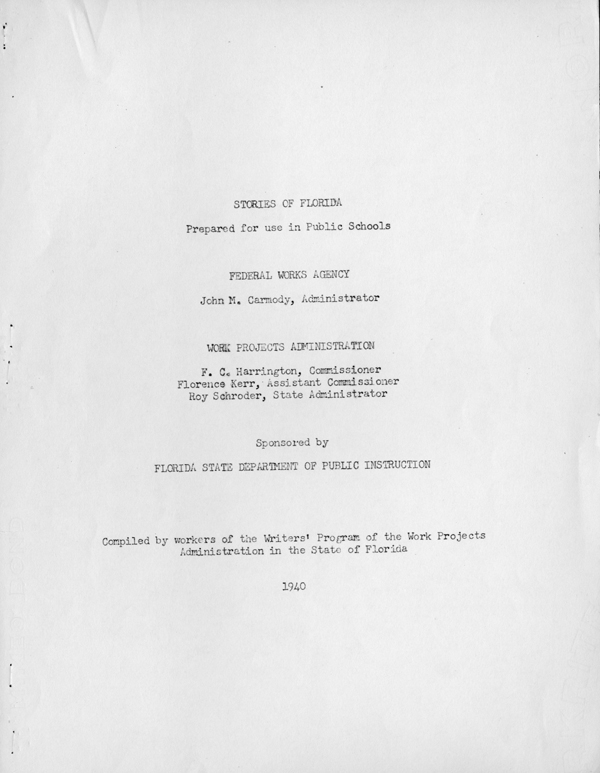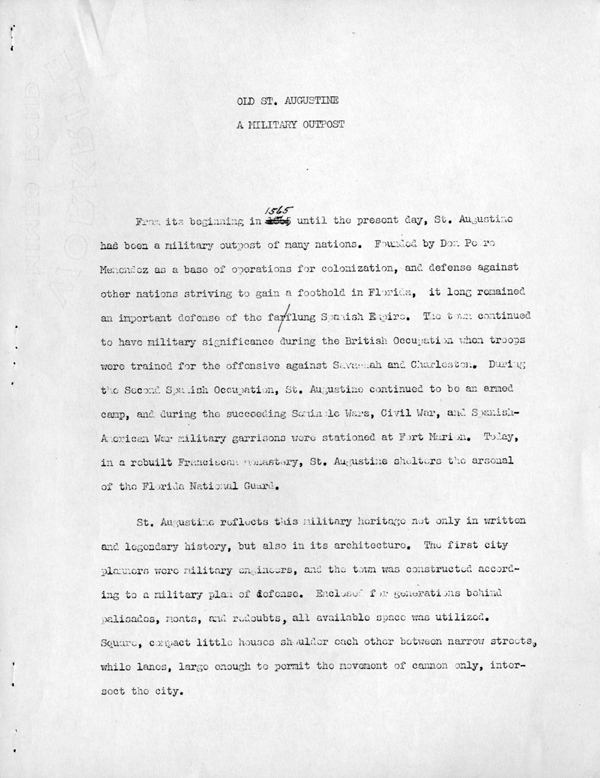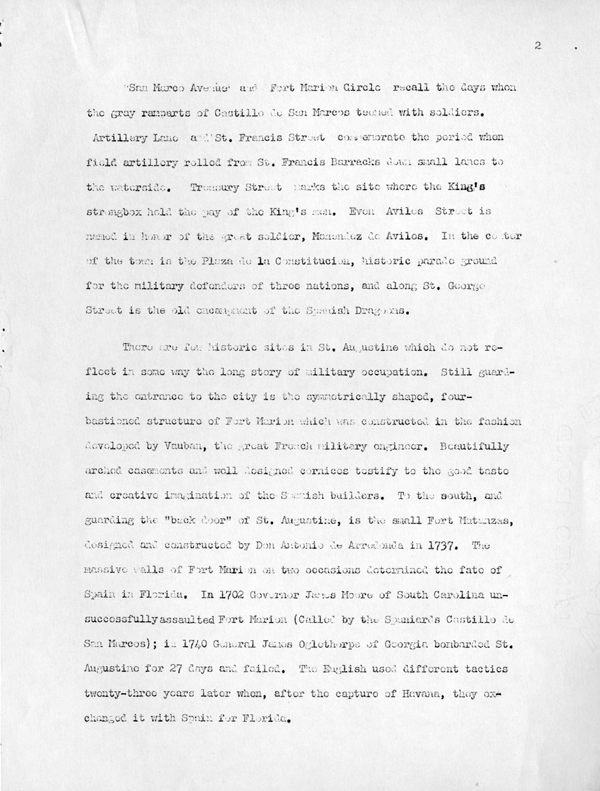Florida Memory is administered by the Florida Department of State, Division of Library and Information Services, Bureau of Archives and Records Management. The digitized records on Florida Memory come from the collections of the State Archives of Florida and the special collections of the State Library of Florida.

State Archives of Florida
- ArchivesFlorida.com
- State Archives Online Catalog
- ArchivesFlorida.com
- ArchivesFlorida.com
State Library of Florida
Related Sites
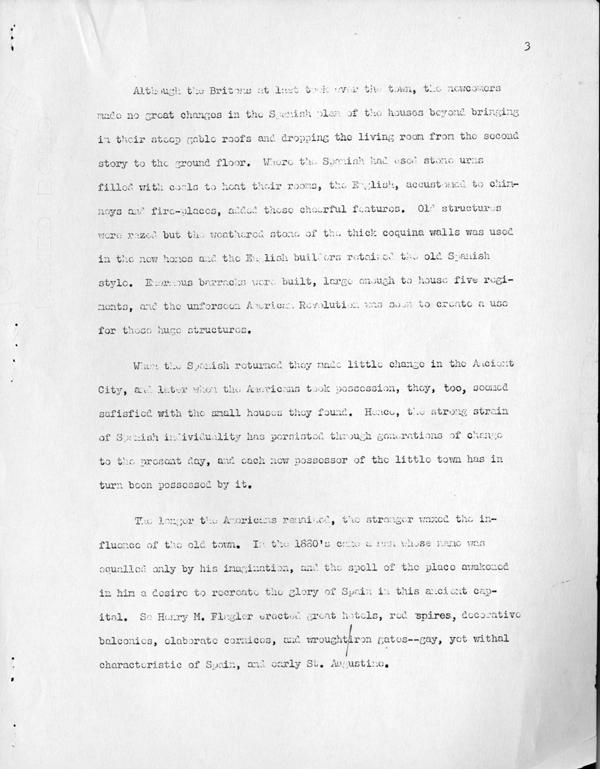
Description of previous item
Description of next item

Title
Published Date
[page 3]
Although the Britons at last task over the town, the newcomers made
no great changes in the Spanish plan of the houses beyond bringing in their
steep gable roofs and dropping the living room from the second story to the
ground floor. Where the Spanish had used stone urns filled with coals to
heat their rooms, the English, accustomed to chimneys and fire-places, added
these cheerful features. Old structures were razed but the weathered stone of
the thick conquina walls was used in the new homes and the English builders
retained the old Spanish style. Enormous barracks were built, large enough to
house five regiments, and the unforeseen American Revolution was seen to
create a use for these huge structures.
When the Spanish returned they made little change in the Ancient
City, and later when the Americans took possession, they, too, seemed
satisfied with the small houses they found. Hence, the strong strain of
Spanish individually has persisted through generations of change to the
present day, and each new possessor of the little town has in turn been
possessed by it.
The longer the Americans remained, the stronger waxed the influence
of the old town. In the 1880's came a man whose name was equalled only by
his imagination, and the spell of the place awakened in him a desire to
recreate the glory of Span in this ancient capital. So Henry M. Flagler erected
great hotels, red spires, decorative balconies, elaborate cornices, and wrought
iron gates-gay, yet withal characteristic of Spain, and early St. Augustine.
Title
Subject
Description
Source
Date
Format
Language
Type
Identifier
Published Date
Image URL
Thumbnail
Transcript Path
Image Path
Image Path - Large
Chicago Manual of Style
Old St. Augustine: A Military Outpost. 1940. State Archives of Florida, Florida Memory. <https://www.floridamemory.com/items/show/181530>, accessed 26 December 2025.
MLA
Old St. Augustine: A Military Outpost. 1940. State Archives of Florida, Florida Memory. Accessed 26 Dec. 2025.<https://www.floridamemory.com/items/show/181530>
AP Style Photo Citation

 Listen: The World Program
Listen: The World Program